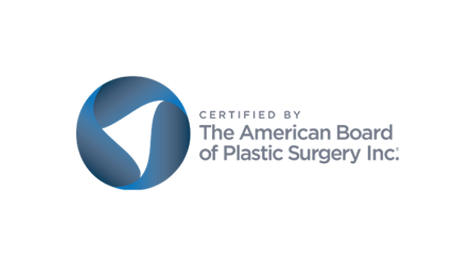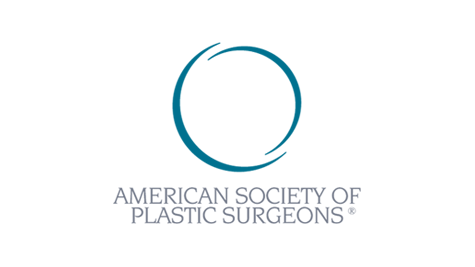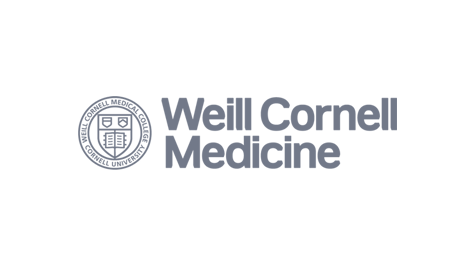Best Facelift Surgeon in
New York City
Natural Looking Results
Facelift surgery is a popular cosmetic procedure that requires careful consideration. Seek a board-certified plastic surgeon who can evaluate your facial anatomy and determine if you’re a suitable candidate.
Facelift surgery is a highly effective procedure designed to restore a youthful, refreshed appearance. By removing excess skin, tightening underlying muscles, and repositioning facial tissues, a facelift can dramatically improve these signs of aging for a more vibrant look.
When it comes to finding the best facelift surgeon in New York City, Dr. Philipp Franck stands out for his board certification and national recognition. He has been named New York Magazine’s Rising Star surgeon and listed as Castle Conolly’s Top Doctors. Dr. Franck combines advanced surgical techniques with an artist’s eye for natural-looking results. He tailors each procedure to the patient’s unique facial anatomy, ensuring minimal scarring, quick recovery, and long-lasting improvements.
What Is Facelift Surgery?
A facelift & neck-lift (also known as rhytidectomy) is a specialized procedure aimed at tightening facial tissues, removing excess skin, and restoring a younger-looking contour to the face and neck. On a biological level, the natural decrease in collagen and elastin production—along with changes in facial fat distribution and bone structure—leads to deep wrinkles, sagging skin, and loss of definition around the jawline. By carefully repositioning underlying tissues and smoothing the skin, a facelift provides a comprehensive rejuvenation that often cannot be achieved with non-surgical treatments alone.
How is a Facelift performed?
During a facelift & necklift, Dr. Franck uses strategically placed incisions around the hairline and behind the ears to minimize visible scarring. In a deep plane approach, the facial tissues are carefully elevated underneath the skin to achieve more robust lifting and a long-lasting outcome. Next, underlying muscles and tissues are carefully repositioned to correct sagging, while excess skin is removed for a smoother contour. In some cases, facial fat grafting is incorporated to restore lost volume and enhance overall contour. Finally, incisions are meticulously closed to allow for optimal healing and to maintain a natural contour.
Benefits of Facelift Surgery
Tighten sagging tissues around the mid-face, jawline, and neck
Reduce deep wrinkles while maintaining a natural look
Restore youthful contours for better facial harmony
Address multiple signs of aging in a single procedure
Enhance self-confidence through a rejuvenated appearance
Enjoy long-lasting results not achievable by non-surgical methods
The Facelift Consultation
Scheduling a consultation is a key step in achieving the best facelift results. During this thorough evaluation with Dr. Franck you will discuss your medical history, aesthetic goals, and any concerns you may have. By carefully examining factors such as skin elasticity, facial structure, and overall health, a personalized treatment plan is created to address your unique needs. The consultation also offers an opportunity to review realistic outcomes, explore additional procedures, and ensure that you fully understand the recovery process. This comprehensive approach helps to provide the information needed to deliver natural-looking, long-lasting rejuvenation for patients seeking the best facelift NYC has to offer.
“A facelift is more than tightening skin; it’s about restoring balance and confidence in your facial features. True rejuvenation happens when natural beauty and harmony work hand in hand.”
Is A Facelift The Right Thing For You
Determining candidacy for the best facelift involves assessing several factors, including overall health, realistic expectations, and whether you are a non-smoker. Ideal candidates often have visible signs of facial aging—such as sagging cheeks or loose skin around the jawline—but still retain enough elasticity for meaningful improvement. By discussing your cosmetic goals with Dr. Franck you can determine what facelift technique is the right path for you and should you consider additional procedures.
Good Candidates
For A Facelift
Are usually between 40 and 70 years of age
Want to reverse the signs of facial aging
Have minimal to moderate skin laxity in the neck and jowls
Have deep nasolabial folds and marionette lines around the nose and mouth
Have deep creases under the lower eyelids
Have a double chin or excess fatty skin underneath the chin
Are nonsmokers or willing to stop smoking a few months before the surgery
Have realistic expectations from the facelift procedure
Are in generally good physical and mental health
Understand the risks involved with a facelift surgery
Can take at least two weeks off work to recover properly
Combine Facelift with Other Procedures
One of the advantages of a facelift is that it can be paired with other surgical techniques to achieve comprehensive rejuvenation. For instance, blepharoplasty (upper or lower eyelid surgery) and a brow lift can help address signs of aging around the eyes and forehead, creating a more refreshed appearance. Adding a lip lift can enhance the proportions of the mouth and restore a youthful balance to the mid-face. Some patients opt for rhinoplasty or facial contouring (softening sharp bony angles) to refine their features, while facial fat grafting can restore lost volume in areas like the cheeks or temples. Lastly, neck liposuction is often performed in conjunction with a facelift to sculpt the jawline for a smooth, elegant profile. By working with a best facelift surgeon nyc, you can customize these procedures to align perfectly with your aesthetic goals and ensure the best facelift results possible.
Popular procedures that are combined with facelift surgery
Eyelid surgery
Brow lift
Lip lift
Rhinoplasty
Facial fat grafting
Neck liposuction
Breast and body procedures
Recovery After Facelift
The initial phase of facelift recovery typically involves swelling, bruising, and mild discomfort that may last for one to two weeks. Many patients are able to return to work and light activities once these symptoms subside, although strenuous exercise should be avoided for several weeks. Facelift-specific post-operative instructions - such as keeping the head elevated, using cold compresses, and taking prescribed medications - can help ensure a smooth healing process. Regular follow-up appointments allow for progress to be monitored and any concerns to be addressed promptly. By following these guidelines, patients can enjoy the best facelift results, minimize complications, and ultimately achieve a rejuvenated appearance..




Dr. Philipp Franck -
New York Facelift Surgeon
Dr. Franck, a board-certified plastic and reconstructive surgeon, completed his training at two prestigious Ivy League university hospitals. He trained with renowned facial plastic surgery experts such as Dan Baker and Dr. Ramtin Kassir, specializing in SMAS and deep plane facelift surgery. Recognized as one of New York's Rising Star Surgeons by the New York Times Magazine, Dr. Franck also serves as a Clinical Assistant Professor at Cornell University Hospital in New York. Dr. Franck is included in Castle Connolly’s list of Top Doctors in the country.
What Are The Different Techniques In Facelift Surgery
The Mini Facelift: A mini facelift is a minimally invasive cosmetic procedure that targets the lower third of the face and neck, offering natural-looking and long-lasting results. Board-Certified Plastic Surgeon Philipp Franck, MD specializes in mini facelift procedures with smaller incisions, minimal downtime, and personalized care to achieve a youthful appearance.
The Deep Plane Facelift: A deep plane facelift is a surgical procedure that lifts and repositions the deeper facial tissues, including the muscles and fat pads, to create a more natural and long-lasting rejuvenation of the face and neck. It recently gained a lot of popularity for its longer-lasting results.
The SMAS Lift: SMAS facelift is a surgical procedure that aims to lift and tighten the deeper layers of the face, specifically the SMAS layer, which is a fibrous layer of tissue beneath the skin. SMAS-only facelifts are typically less invasive than traditional facelifts, as they do not require the lifting and removal of excess skin.
The MACS Lift: Minimal Access Cranial Suspension facelift involves lifting and tightening the lower two-thirds of the face, using special sutures, resulting in a more youthful and refreshed appearance. MACS facelift is typically performed under local anesthesia with sedation and has a shorter recovery time than traditional facelift surgery.
The Short Scar Facelift: Unlike traditional facelift surgery, which involves longer incisions that extend behind the ear and into the hairline, the short scar facelift involves shorter incisions hidden within the natural creases in front of the ear.
The Subperiosteal Facelift: A subperiosteal facelift is a type of facelift that provides a more dramatic improvement in the appearance of the face than a traditional facelift. By raising the deepest tissue planes.
What Technique Is Right for You?
Choosing the right facelift technique depends on your unique anatomy, skin laxity, and personal goals. If you are looking for a less invasive option with quicker recovery, a mini facelift may be ideal. Alternatively, a deep plane or SMAS facelift can offer dramatic improvement for those with more advanced signs of aging. By scheduling a personal consultation with Dr. Franck you can explore each approach to ensure the best choice for you.
Risks of Facelift Surgery
Although a facelift is generally safe when performed by an experienced surgeon, there are potential risks. Regardless of the technique or surgeon, risks and potential complications are a part of surgery that must be well discussed with the patient before any procedure. Although rare, these risks include hematoma (blood pooling under the skin), infection, nerve injury causing numbness or temporary weakness, and unsatisfactory scarring. Some patients may experience prolonged swelling or skin irregularities during the healing process. In addition, certain factors such as smoking, underlying medical conditions, or poor skin elasticity may increase the likelihood of complications. A thorough discussion of these risks before surgery - and following all postoperative instructions - can help ensure a safer procedure and a more successful outcome.
Proudly serving the NYC Tri-State area, including New York, New Jersey, Connecticut, and much more.




















